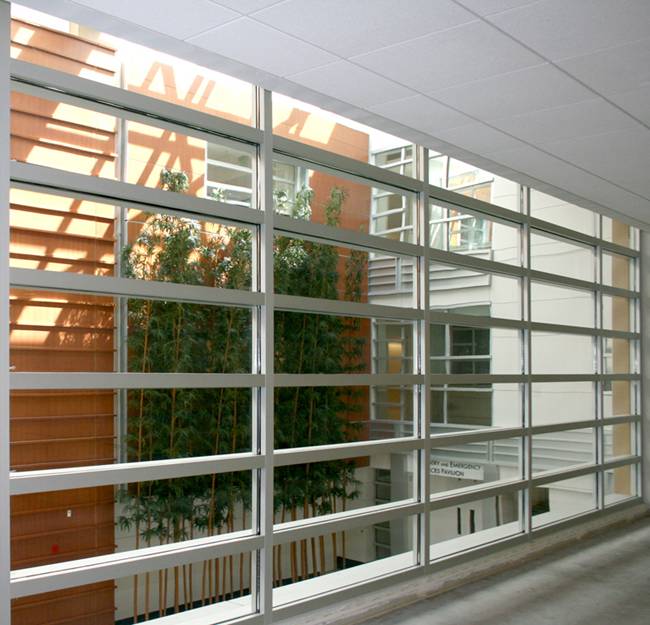Fire Rated Glazing Adds Light and Fire Protection
Clear glazing in healthcare occupancies is healthy for patients and workers, according to a study by The Center for Health Design. What happens if a designer wants to add transparency to corridors, exit enclosures, exit stairways or exterior walls where fire and building codes require 1 or 2 hour fire ratings? There are economical, fire rated glazing products that comply with codes, offer built-in or passive fire protection and add light into healthcare interiors.
“Total building fire protection for life safety is more necessary in healthcare occupancies than other occupancies, because of the nature of the occupants,” wrote NFPA Technical Committee member Daniel O’Connor. A review of the National Fire Incident Reporting System data revealed that built-in or passive fire protection limited fire spread to the room of origin in 90% of health-related buildings. Active fire suppression systems and speedy fire department response provided the other 10%.
2012 IBC Chapter 7 Tables 716.3, 716.5 and 716.6 list the types of fire rated glass and restrictions for 1-hour exit corridors, 1-hour exit/stairwell enclosures, 2-hour exit/stairwell enclosures, 1-hour exterior walls, and 2-hour exterior walls.
 |
Unsafe Wired Glass Should be Replaced
According to the Capital Funding Buzz Survey conducted in November 2012, 47% of the responding hospitals and healthcare providers prioritize capital investment in upgrading existing facilities in the next 12-18 months. When renovating, healthcare executives and designers should give serious thought to removing the risk of wired glass because it breaks easily on impact and is likely to injure anyone who runs into or through it.
For over 100 years, traditional wired glass was the only fire-rated glass product available. It was mistakenly perceived as “safety glazing”. Wire actually weakens the glass making it about half as strong as ordinary window glass.
 |
Modern building codes now require that glazing larger than 1296 sq inches in hazardous locations meet the CPSC Cat.II Standard (which means that the glazing survives impact of 400 foot pounds.) The codes also require that when an existing panel of unsafe wired glass breaks, it must be replaced with a glazing product that meets the current safety glazing codes. There are economical, non-wired, Cat. II safety rated, fire rated glazing products that can be used to replace large, unsafe wired glass, including: SuperLite I, SuperLite II-XL and SuperLite I-XL.